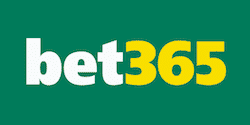Welcome to our big guide to sports betting odds. This page serves two purposes. First, the chart below shows which betting sites offer which odds formats in case you have a preference. Scroll down past the chart for an explanation of how the different types of odds work.
Betting Sites by Odds Format

The odds are the language of online sports betting. If you’re completely new to sports betting and the idea of learning a new language sounds terrible, don’t worry. This just happens to be the simplest language in the world. All it takes is a few minutes of quick study. It is worth the effort to understand the odds because without them, it is impossible to place intelligent bets.
Odds can be published in any number of formats depending on where you live and which bookmakers you use. We’ll cover that more in a moment. The main thing you need to know is that no matter which format is used, the odds always tell you two key pieces of information:
- How much you’re about to risk
- How much you stand to win
Most betting sites today can be configured to display the odds in any of the three major formats. These are fractional (popular in the UK), decimal (popular throughout Europe) and American (you can guess where this format is prevalent). If you have a preference for one or the other, you can flip a switch somewhere on the betting website to show all wagers in that format.
Now, let’s talk about each odds format.
Fractional Odds Betting
Fractional betting odds are the dominant format in the UK and Ireland. As the name suggests, the odds are set up in the form of a fraction. If you remember back to your school days, every fraction consists of a numerator (the number on the left side of the fraction) and a denominator (right side).
The numerator shows how many units you will receive if you place a bet of units equal to the denominator. This probably sounds confusing right now, but a simple example will make sense of it.
Let’s say you see a bet in which the odds are 5/1. What this tells you is that you stand to win 5 units for every 1 unit you risk. In this case, a £10 bet would return a net profit of £50. Fractional odds do not include the return of your original stake; they only show your net profit if your bet is a winner. To continue the example, your total return would be £60 (your £10 stake plus the £50 in winnings).
Now, let’s take that same example and reverse it. In this case, let’s say you see a bet with odds of 1/5. In this case, you are being asked to risk 5 units for every 1 unit in profit. A £50 bet at 1/5 would return £10 in net profit. Your total return in this case would be £60.
Fractional odds aren’t always as “clean” as in the above examples. In many cases, the odds look something like 8/5 or 7/20. Just remember that the first number always shows how much you stand to win while the second number shows how much you’re being asked to risk.
In the example of 7/20, you will win 7 units for every 20 units you risk. If you were to bet £20 at 7/20, your net profit would be £7 for a total return of £27. It’s a little tougher to mentally calculate your return in examples such as this one, but your bookmaker will always include a betting slip that you can use to see how much you stand to win.
Decimal Odds
The decimal odds format is popular across much of Europe and Asia. In my opinion, this is the easiest format to understand. All you have to do is multiply your intended wager by the decimal and that’s how much your bet will return in total. It is important to note that decimal odds DO INCLUDE the return of your original stake and not just the net profit like fractional odds show.
Example 1
You see a bet with odds of 6.00. A wager of €100 would return €600 in total for a net profit of €500.
Example 2
You see a bet with odds of 2.30. A wager of €10 would return €23 in total for a net profit of €13.
Example 3
You see a bet with odds of 1.22. A wager of €100 would return €122 in total for a net profit of €22.
American Odds
The American odds format looks funny but it is also pretty simple. Many people call wagers listed in this format “the moneyline.” The important thing to know is that this number is always displayed as either a positive or negative number.
If the number is positive, it means you stand to win an amount greater than your original stake (when backing underdogs). If the number is negative, it means you stand to win an amount less than your original stake (when backing favorites).
Example
Let’s say the Texas Rangers and Toronto Blue Jays are scheduled to play a postseason baseball game tomorrow. The oddsmakers run their analysis and decide to offer the following moneyline on the game:
- Rangers: +155
- Blue Jays: -175
The Rangers are considered the underdogs in this game and therefore have a positive moneyline of +155. This means that for every $100 you bet on the Rangers, your net profit if successful will be $155. The total return on this bet would be $255 ($155 in winnings plus the return of your original $100 wager).
The Blue Jays are the favorites in this matchup and have therefore been given a negative moneyline of -175. This means you must risk $175 for every $100 in potential winnings. Therefore, a $175 bet on the Blue Jays would result in $100 in net profit if they go on to win the game.
You can see that American odds work in units of one hundred. However, you can also bet smaller or oddball amounts. To continue the example, you could just as easily wager $17.5 on the Blue Jays for a shot at winning $10 in net profit.
Asian Handicap
The Asian handicap looks horrifically complicated and is usually an instant turn-off to newbies. Although the Asian handicap is more complex than other odds formats, it isn’t quite as bad as it looks. Asian handicaps are almost always exclusive to football betting. Their purpose is to make lopsided matches more attractive to punters and to eliminate the tie outcome.
First, understand that handicaps give one side or another an advantage at the beginning of the game. If we have an international match between England and Estonia, for example, the odds are going to be so lopsided that it’s hardly worth backing either side.
So, the handicap may instead give England a deficit of -2.5 goals. For our purposes, this would mean Estonia is starting the game with a lead of 2.5 goals that England must overcome. In other words, England would have to win the game by 3 goals or more for any bets on England to win. Likewise, Estonia would have to avoid losing the game by 3 goals or more for any bets on Estonia to win.
Where things get weird is sometimes your bet is divided into halves with half your wager being played at one handicap and the other at another handicap. Don’t quit yet – I promise things will start making sense soon.
Bets with 2 handicap numbers such as -2.0, -2.5 or +2.0, +2.5
It is common to see Asian handicaps in which there are two different handicap numbers in addition to the betting odds. It looks like a mess but it’s not nearly as complicated as it seems. Let’s continue with our England v Estonia example. Below is an actual bet that appeared at William Hill a while back:
- England: -2.0, -2.5 2.150
- Estonia: +2.0, +2.5 1.800
What this all means is that half you wager will go at one handicap and half will go at the other. Let’s say you want to back England with a £100 bet. Half your wager will be put on England at -2 and half will go on them at -2.5.
There are several possible outcomes:
- England wins by 3+ goals: Your entire stake is paid at 2.150 odds. You get back £215.
- England wins by 2 goals: Half your wager is returned (the half that was placed at -2) and half your wager is lost (the half that was placed at -2.5). You get back £50.
- England wins by 1 goal: Your entire bet is lost.
- England ties or loses: Your entire bet is lost.
¼ and ¾ Asian Handicaps
These are the strangest-looking handicaps because it’s natural to wonder how it makes any sense at all to give a team a quarter-goal handicap. Wouldn’t that be the same as giving them a ½ goal handicap? Well, no. That’s not what quarter and three-quarter handicaps are representing. They only look like that because a long time ago, someone thought it would be funny to confuse millions of gamblers.
What ¼ and ¾ handicaps actually represent is another half-and-half wager on two different handicaps. Let me explain.
-¼ Handicap
A ¼ handicap means half your stake goes on that team at a 0 handicap with the other half going at a -1/2 point handicap. A bookmaker could also just express this as 0, -0.5 in the same fashion that I explained in the previous section.
If you bet £100 on a team with a ¼ handicap, it means you are actually wagering £50 with no handicap and £50 at a half-point handicap. These would be your possible outcomes:
- Your team wins by one goal or more: You win the entire bet.
- The match is a draw: Half your bet is refunded and half is lost.
- Your team loses: You lose the entire bet.
+¼ Handicap
Same idea here except now half your bet is placed at a handicap of 0 and half your bet is placed at +1/2 a goal. Possible outcomes:
- Your team wins by one goal or more: You win the entire bet.
- The match is a draw: Half your bet wins and half is refunded
- Your team loses: You lose the entire bet.
-¾ Handicap
Placing a bet at a -¾ handicap is the same as taking a bet at -0.5, -1. In other words, half your wager goes on a -0.5 goal handicap and half goes on a -1 goal handicap. Possible outcomes:
- Your team wins by 2 or more goals: You win the entire bet.
- Your team wins by 1 goal: You win half your bet (the half at -0.5) and half your bet is refunded (the half at -1).
- The match is a draw: You lose the entire bet.
- Your team loses: You lose the entire bet.
+¾ Handicap
This is the opposite of the -¾ handicap. In this one, half your wager goes at +0.5 and half goes at +1. Possible outcomes:
- Your team wins: You win the entire bet.
- The match is a draw: You win the entire bet.
- Your team loses by 1: Half your bet is refunded (the half placed at +1) and half your bet is lost (the half placed at +0.5).
- Your team loses by 2 or more goals: You lose the entire bet.
Asian handicaps look terrible but if you break it down a bit, they start to make sense. You can avoid them for now if you’re totally new to betting, but you may want to reconsider later. It is often easier to find a better price for your favorite team if you’re willing to take the Asian handicap.
Indonesian Odds Format
Now we can get back to something much simpler. Indonesian odds work pretty much the same as American odds but with the decimal place moved 2 spot to the left.
For example, a team priced at -250 in the American format would be priced at -2.5 in the Indonesian format. Likewise, a team priced at +340 in the American format would be priced at 3.4 in the Indonesian format.
Example: Chelsea v Aston Villa
- Chelsea: -3.00
- Aston Villa: 7.00
- Draw: 4.25
Chelsea are the favorites in this match so they are priced at -3.00. This means that you must risk €3.00 for every €1.00 in potential winnings. If you want to back Aston Villa, you stand to win €7.00 for every €1.00 risked.
Hong Kong Odds
Hong Kong odds are also fairly simple. They simply show how much net profit you will earn per unit wagered. For example, Hong Kong odds of 0.5 mean you would win €5 on a successful €10 wager. Odds of 1.00 are the same as even money – you would win an amount equal to your original stake. Odds of 2.5 would mean you stand to win €2.5 for every €1 risked.
Example: Slovakia v Belarus
- Slovakia: 0.55
- Belarus: 6.00
- Draw: 3.20
In this example, Slovakia is favoured to win the match and their odds reflect that. Every €1.00 bet on Slovakia will return €0.55 in net profit if they go on to win the match. On the other side, every €1.00 you wager on Belarus will return €6.00 in net profit if they manage the upset.

Wes Burns has more than a decade’s worth of experience as a writer, researcher, and analyst in the legal online betting industry and is co-founder of OnlineBettingSites.com. Wes approaches his work from the viewpoint of players.


